Gathic ''
Staota Yesnya'' with the ''
haoma
''Haoma'' (; Avestan: 𐬵𐬀𐬊𐬨𐬀) is a divine plant in Zoroastrianism and in later Persian culture and mythology. ''Haoma'' has its origins in Indo-Iranian religion and is the cognate of Vedic '' soma''.
Etymology
Both Avestan ''haoma'' ...
'' ceremony. Furthermore, it is believed that another longer service developed, known as the ''
Visperad'', which derived from the extended yasna. This was developed for the celebration of the seven holy days of obligation (the ''
Gahambars'' plus ''
Nowruz
Nowruz ( fa, نوروز, ; ), zh, 诺鲁孜节, ug, نەۋروز, ka, ნოვრუზ, ku, Newroz, he, נורוז, kk, Наурыз, ky, Нооруз, mn, Наурыз, ur, نوروز, tg, Наврӯз, tr, Nevruz, tk, Nowruz, ...
'') and was dedicated to
Ahura Mazda
Ahura Mazda (; ae, , translit=Ahura Mazdā; ), also known as Oromasdes, Ohrmazd, Ahuramazda, Hoormazd, Hormazd, Hormaz and Hurmuz, is the creator deity in Zoroastrianism. He is the first and most frequently invoked spirit in the '' Yasna ...
.
While the very earliest Zoroastrians eschewed writing as a form of demonic practice, the
Middle Persian
Middle Persian or Pahlavi, also known by its endonym Pārsīk or Pārsīg () in its later form, is a Western Middle Iranian language which became the literary language of the Sasanian Empire. For some time after the Sasanian collapse, Middle Per ...
Zand, along with much secondary Zoroastrian literature, was recorded in writing during the Sassanid era for the first time. Many of these Zoroastrian texts were original works from the Sassanid period. Perhaps the most important of these works was the ''
Bundahishn
''Bundahishn'' (Avestan: , "Primal Creation") is the name traditionally given to an encyclopedic collection of Zoroastrian cosmogony and cosmology written in Book Pahlavi. The original name of the work is not known.
Although the ''Bundahishn'' ...
'' – the mythical Zoroastrian story of Creation. Other older works, some from remote antiquity, were possibly translated from different Iranian languages into Middle Persian during this period. For example, two works, the ''
Drakht-i Asurig'' (Assyrian Tree) and ''
Ayadgar-i Zareran'' (Exploits of Zarter) were probably translated from
Parthian originals.

Of great importance for Zoroastrianism was the creation of the Avestan alphabet by the Sassanids, which enabled the accurate rendering of the
Avesta
The Avesta () is the primary collection of religious texts of Zoroastrianism, composed in the Avestan language.
The Avesta texts fall into several different categories, arranged either by dialect, or by usage. The principal text in the li ...
in written form (including in its original language/phonology) for the first time. The alphabet was based on the Pahlavi alphabet, Pahlavi one, but rather than the inadequacy of that script for recording spoken Middle Persian, the Avestan alphabet had 46 letters, and was well suited to recording Avestan language, Avestan in written form in the way the language actually sounded and was uttered. The Persian
magi
Magi (; singular magus ; from Latin '' magus'', cf. fa, مغ ) were priests in Zoroastrianism and the earlier religions of the western Iranians. The earliest known use of the word ''magi'' is in the trilingual inscription written by Darius t ...
were therefore finally able to record all surviving ancient Avestan texts in written form.
As a result of this development, the Sasanian Avesta was then compiled into 21 nasks (divisions) to correspond with the 21 words of the ''Ahuna Vairya, Ahunavar'' invocation. The nasks were further divided into three groups of seven. The first group contained the ''Gathas'' and all texts associated with them, while the second group contained works of scholastic learning. The final section contained treatises of instruction for the magi, such as the ''Vendidad'', law-texts and other works, such as ''yashts''.
An important literary text, the ''Khwaday-Namag'' (Book of Kings), was composed during the Sasanian era. This text is the basis of the later ''
Shahnameh
The ''Shahnameh'' or ''Shahnama'' ( fa, شاهنامه, Šāhnāme, lit=The Book of Kings, ) is a long epic poem written by the Persian poet Ferdowsi between c. 977 and 1010 CE and is the national epic of Greater Iran. Consisting of some 50 ...
'' of
Ferdowsi. Another important Zoroastrian text from the Sasanian period includes the ''Menog-i Khrad, Dadestan-e Menog-e Khrad'' (Judgments of the Spirit of Wisdom).
Christianity
Christians in the Sasanian Empire belonged mainly to the Nestorian Church (Church of the East) and the Syriac Orthodox Church, Jacobite Church (Syriac Orthodox Church) branches of Christianity. Although these churches originally maintained ties with Christian churches in the Roman Empire, they were indeed quite different from them. One reason for this was that the liturgical language of the Nestorian and Jacobite Churches was
Syriac Syriac may refer to:
* Syriac language, an ancient dialect of Middle Aramaic
*Sureth, one of the modern dialects of Syriac spoken in the Nineveh Plains region
* Syriac alphabet
** Syriac (Unicode block)
** Syriac Supplement
* Neo-Aramaic languages ...
rather than Greek, the language of Roman Christianity during the early centuries (and the language of Eastern Roman Christianity in later centuries). Another reason for a separation between Eastern and Western Christianity was strong pressure from the Sasanian authorities to sever connections with Rome, since the Sasanian Empire was often at war with the Roman Empire.
Christianity was recognized by Yazdegerd I in 409 as an allowable faith within the Sasanian Empire.
The major break with mainstream Christianity came in 431, due to the pronouncements of the First Council of Ephesus. The Council condemned Nestorius, a theologian of Cilician/Kilikian origin and the patriarch of Constantinople, for teaching a view of Christology in accordance with which he refused to call Mary, mother of Jesus, "Theotokos" or Mother of God. While the teaching of the Council of Ephesus was accepted within the Roman Empire, the Sasanian church disagreed with the condemnation of Nestorius' teachings. When Nestorius was deposed as patriarch, a number of his followers fled to the Sasanian Empire. Persian emperors used this opportunity to strengthen Nestorius' position within the Sasanian church (which made up the vast majority of the Christians in the predominantly Zoroastrian Persian Empire) by eliminating the most important pro-Roman clergymen in Persia and making sure that their places were taken by Nestorians. This was to assure that these Christians would be loyal to the Persian Empire, and not to the Roman.
Most of the Christians in the Sasanian empire lived on the western edge of the empire, predominantly in Mesopotamia, but there were also important extant communities in the more northern territories, namely Caucasian Albania, Lazica,
Iberia
The Iberian Peninsula (),
**
* Aragonese and Occitan: ''Peninsula Iberica''
**
**
* french: Péninsule Ibérique
* mwl, Península Eibérica
* eu, Iberiar penintsula also known as Iberia, is a peninsula
A peninsula (; ) is a la ...
, and the Persian part of Armenia. Other important communities were to be found on the island of Tylos (present day
Bahrain
Bahrain ( ; ; ar, البحرين, al-Bahrayn, locally ), officially the Kingdom of Bahrain, ' is an island country in Western Asia. It is situated on the Persian Gulf, and comprises a small archipelago made up of 50 natural islands and an ...
), the southern coast of the Persian Gulf, and the area of the Arabian kingdom of Lakhmids, Lakhm. Some of these areas were the earliest to be Christianized; the kingdom of
Armenia
Armenia (), , group=pron officially the Republic of Armenia,, is a landlocked country in the Armenian Highlands of Western Asia.The UNbr>classification of world regions places Armenia in Western Asia; the CIA World Factbook , , and ...
became the first independent Christian state in the world in 301. While a number of Assyrian territories had almost become fully Christianized even earlier during the 3rd century, they never became independent nations.
Other religions
Some of the recent excavations have discovered the Buddhist, Hindu and Jewish religious sites in the empire. Buddhism and Hinduism were competitors of Zoroastrianism in
Bactria
Bactria (; Bactrian: , ), or Bactriana, was an ancient region in Central Asia in Amu Darya's middle stream, stretching north of the Hindu Kush, west of the Pamirs and south of the Gissar range, covering the northern part of Afghanistan, so ...
and Margiana, in the far easternmost territories. A very large Jewish community flourished under Sasanian rule, with thriving centers at
Isfahan,
Babylon and
Khorasan, and with its own semiautonomous ''Exilarchate'' leadership based in Mesopotamia. Jewish communities suffered only occasional persecution. They enjoyed a relative freedom of religion, and were granted privileges denied to other religious minorities. Shapur I (Shabur Malka in Aramaic) was a particular friend to the Jews. His friendship with Samuel of Nehardea, Shmuel produced many advantages for the Jewish community. He even offered the Jews in the Sasanian empire a fine white Nisaean horse, just in case the Messiah, who was thought to ride a donkey or a mule, would come. Shapur II, whose mother was Jewish, had a similar friendship with a Babylonian rabbi named Rabbah bar Nahmani, Rabbah. Raba's friendship with Shapur II enabled him to secure a relaxation of the oppressive laws enacted against the Jews in the Persian Empire. Moreover, in the eastern portion of the empire, various Buddhist places of worship, notably in Bamyan City, Bamiyan, were active as Buddhism gradually became more popular in that region.
Language
Official languages
During the early Sasanian period,
Middle Persian
Middle Persian or Pahlavi, also known by its endonym Pārsīk or Pārsīg () in its later form, is a Western Middle Iranian language which became the literary language of the Sasanian Empire. For some time after the Sasanian collapse, Middle Per ...
along with Koine Greek and
Parthian appeared in the inscriptions of the early Sasanian kings. However, by the time Narseh (r. 293–302) was ruling, Greek was no longer in use, perhaps due to the disappearance of Greek or the efforts of the anti-Hellenic Zoroastrian clergy to remove it once and for all. This was probably also because Greek was commonplace among the Romans/Byzantines, the rivals of the Sasanians. Parthian soon disappeared as an administrative language too, but was continued to be spoken and written in the eastern part of the Sasanian Empire, the homeland of the Parthians. Furthermore, many of the Parthian aristocrats who had entered into Sasanian service after the fall of the
Parthian Empire
The Parthian Empire (), also known as the Arsacid Empire (), was a major Iranian political and cultural power in ancient Iran from 247 BC to 224 AD. Its latter name comes from its founder, Arsaces I, who led the Parni tribe in conq ...
still spoke Parthian, such as the seven Parthian clans, who possessed much power within the empire. Sometimes one of the members of the clans would even protest against Sasanian rule. The Sasanian Empire appears to have stopped using the Parthian language in their official inscriptions during the reign of
Narseh
Narseh (also spelled Narses or Narseus; pal, 𐭭𐭥𐭮𐭧𐭩, New Persian: , ''Narsē'') was the seventh Sasanian King of Kings of Iran from 293 to 303.
The youngest son of Shapur I (), Narseh served as the governor of Sakastan, Hind a ...
.
Aramaic language, Aramaic, like in the
Achaemenid Empire
The Achaemenid Empire or Achaemenian Empire (; peo, 𐎧𐏁𐏂, , ), also called the First Persian Empire, was an ancient Iranian empire founded by Cyrus the Great in 550 BC. Based in Western Asia, it was contemporarily the largest em ...
, yet in the stage of Middle Aramaic, was widely used in the Sasanian Empire, and provided Aramaic alphabet, scripts for Middle Persian and other languages.
Regional languages
Although Middle Persian was the native language of the Sasanians (who, however, were not originally from
Pars), it was only a minority spoken-language in the vast Sasanian Empire; it only formed the majority of Pars, while it was widespread around
Media
Media may refer to:
Communication
* Media (communication), tools used to deliver information or data
** Advertising media, various media, content, buying and placement for advertising
** Broadcast media, communications delivered over mass el ...
and its surrounding regions. However, there were several different Persian dialects during that time. Besides Persian, the unattested predecessor of Old Azeri language, Adhari along with one of its dialects, Tati, was spoken in Azerbaijan (Iran), Adurbadagan (Azerbaijan). Unwritten Daylamite language, Pre-Daylamite and probably Caspian languages, Proto-Caspian, which later became Gilaki language, Gilaki in Gilan and Mazanderani language, Mazandarani (also known as Tabari) in Tabaristan, were spoken about in the same regions. Furthermore, some other languages and dialects were spoken in the two regions.
In the Sasanian territories in the Caucasus, numerous languages were spoken including Old Georgian language, Old Georgian, various Kartvelian languages (notably in Lazica), Middle Persian,
[Shnirelman, V.A.(2001), 'The value of the Past: Myths, Identity and Politics in Transcaucasia', Osaka: National Museum of Ethnology. pp 79:
"Yet, even at the time of Caucasian Albania and later on, as well, the region was greatly affected by Iran and Persian enjoyed even more success than the Albanian language".] Old Armenian language, Old Armenian, Caucasian Albanian language, Caucasian Albanian, Scythian languages, Scythian, Koine Greek, and others.
In
Khuzestan
Khuzestan Province (also spelled Xuzestan; fa, استان خوزستان ''Ostān-e Xūzestān'') is one of the 31 provinces of Iran. It is in the southwest of the country, bordering Iraq and the Persian Gulf. Its capital is Ahvaz and it cover ...
, several languages were spoken; Persian in the north and east, while Aramaic language, Eastern Middle Aramaic was spoken in the rest of the place. Furthermore, late Elamite language, Neo-Elamite may also have been spoken in the province but there are no references explicitly naming the language. In
Meshan
Meshan (Middle Persian: 𐭬𐭩𐭱𐭠𐭭) was a province of the Sasanian Empire. It consisted of the Parthian vassal kingdom of Characene and reached north along the Shatt al-Arab river and then the lower Tigris to Madhar and possibly further ...
, the Arameans, along with settled Arabs (known as Mesenian Arabs), and the nomadic Arabs, formed the Semitic languages, Semitic population of the province along with Nabataeans, Nabataean and Palmyrene dialect, Palmyrene merchants. Iranians had also begun to settle in the province, along with the Jat people, Zutt, who had been deported from
India
India, officially the Republic of India ( Hindi: ), is a country in South Asia. It is the seventh-largest country by area, the second-most populous country, and the most populous democracy in the world. Bounded by the Indian Ocean on the ...
. Other Indian groups such as the Ethnic Malays, Malays may also have been deported to Meshan, either as captives or recruited sailors. In
Asoristan
Asoristan ( pal, 𐭠𐭮𐭥𐭥𐭮𐭲𐭭 ''Asōristān'', ''Āsūristān'') was the name of the Sasanian province of Assyria and Babylonia from 226 to 637.
Name
The Parthian name ''Asōristān'' (; also spelled ''Asoristan'', ''Asuristan' ...
, the majority of the people were Aramaic-speaking Nestorian Christians, notably including Syriac language, Middle Syriac, while the Persians, Jews and Arabs formed a minority in the province.
Due to invasions from the Scythians and their sub-group, the Alans, into Atropatene, Armenia, and other places in the Caucasus, the places gained a larger, although small, Iranian population. Parthian was spoken in
Khorasan along with other Iranian dialects and languages, while the Sogdian language, Sogdian, Bactrian language, Bactrian and Khwarezmian language, Khwarazmian languages were spoken further east in places which were not always controlled by the Sasanians. To the further south in Sakastan, which saw an influx of Scythians during the Parthian period, much later the place of Sistani dialect, Sistanian Persian, an unknown Southwestern Iranian languages, Middle Southwestern Iranian language was spoken if it was not likely Middle Persian as well. Kerman Province, Kirman was populated by an Iranian group which closely resembled the Persians while, farther to the east in Paratan (satrapy), Paratan, Turan (satrapy), Turan and Makran, non-Iranian languages and an unknown Northwestern Iranian languages, Middle Northwestern Iranian language were spoken. In major cities such as
Gundeshapur
Gundeshapur ( pal, 𐭥𐭧𐭩𐭠𐭭𐭣𐭩𐭥𐭪𐭱𐭧𐭯𐭥𐭧𐭥𐭩, ''Weh-Andiōk-Šābuhr''; New Persian: , ''Gondēshāpūr'') was the intellectual centre of the Sassanid Empire and the home of the Academy of Gundishapur, founde ...
and Ctesiphon, Latin, Greek and Syriac were spoken by Roman/Byzantine prisoners of war. Furthermore, Slavic language, Slavic and Germanic language, Germanic were also spoken in the Sasanian Empire, once again due to the capture of Roman soldiers but this must have been negligible. Semitic languages including Himyaritic language, Himyaritic and Sabaean language, Sabaean were spoken in Sasanian Yemen, Yemen.
Legacy and importance
The influence of the Sasanian Empire continued long after it fell. The empire, through the guidance of several able emperors prior to its fall, had achieved a Persian Culture, Persian renaissance that would become a driving force behind the Islamic world, civilization of the newly established religion of
Islam. In modern
Iran
Iran, officially the Islamic Republic of Iran, and also called Persia, is a country located in Western Asia. It is bordered by Iraq and Turkey to the west, by Azerbaijan and Armenia to the northwest, by the Caspian Sea and Turkm ...
and the regions of the Greater Iran, Iranosphere, the Sasanian period is regarded as one of the high points of History of Iran, Iranian civilization.
In Europe
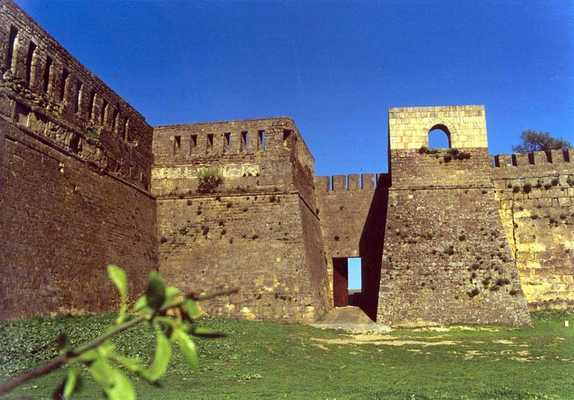
Sasanian culture and military structure had a significant influence on Culture of ancient Rome, Roman civilization. The structure and character of the Roman army was affected by the methods of Persian warfare. In a modified form, the Roman Imperial autocracy imitated the royal ceremonies of the Sasanian court at Ctesiphon, and those in turn had an influence on the ceremonial traditions of the courts of medieval and modern Europe. The origin of the formalities of European diplomacy is attributed to the diplomatic relations between the Persian governments and the Roman Empire.
In Jewish history
Important developments in Jewish history are associated with the Sassanian Empire. The Babylonian Talmud was composed between the third and sixth centuries in Sasanian Persia and major Jewish academies of learning were established in Sura (city), Sura and Pumbedita that became cornerstones of Talmudic Academies in Babylonia, Jewish scholarship. Several individuals of the Imperial family such as Ifra Hormizd the Queen mother of Shapur II and Queen
Shushandukht, the Jewish wife of Yazdegerd I, significantly contributed to the close relations between the Jews of the empire and the government in Ctesiphon.
In India

The collapse of the Sasanian Empire led to Islam slowly replacing Zoroastrianism as the primary religion of Iran. A large number of Zoroastrians chose to emigrate to escape Islamic persecution. According to the ''Qissa-i Sanjan'', one group of those refugees landed in what is now Gujarat, India, where they were allowed greater freedom to observe their old customs and to preserve their faith. The descendants of those Zoroastrians would play a small but significant role in the development of India. Today there are over 70,000 Zoroastrians in India.
The Zoroastrians still use a variant of the religious calendar instituted under the Sasanians. That calendar still marks the number of years since the accession of Yazdegerd III, just as it did in 632.
Chronology

*224–241: Reign of
Ardashir I
Ardashir I (Middle Persian: 𐭠𐭥𐭲𐭧𐭱𐭲𐭥, Modern Persian: , '), also known as Ardashir the Unifier (180–242 AD), was the founder of the Sasanian Empire. He was also Ardashir V of the Kings of Persis, until he founded the new ...
:
** 224: Overthrow of the
Parthian Empire
The Parthian Empire (), also known as the Arsacid Empire (), was a major Iranian political and cultural power in ancient Iran from 247 BC to 224 AD. Its latter name comes from its founder, Arsaces I, who led the Parni tribe in conq ...
** 229–232: War with Rome
**
Zoroastrianism
Zoroastrianism is an Iranian religion and one of the world's oldest organized faiths, based on the teachings of the Iranian-speaking prophet Zoroaster. It has a dualistic cosmology of good and evil within the framework of a monotheistic ont ...
is revived as official religion
** The collection of texts known as the Zend
Avesta
The Avesta () is the primary collection of religious texts of Zoroastrianism, composed in the Avestan language.
The Avesta texts fall into several different categories, arranged either by dialect, or by usage. The principal text in the li ...
is assembled
*241–271: Reign of
Shapur I
Shapur I (also spelled Shabuhr I; pal, 𐭱𐭧𐭯𐭥𐭧𐭥𐭩, Šābuhr ) was the second Sasanian King of Kings of Iran. The dating of his reign is disputed, but it is generally agreed that he ruled from 240 to 270, with his father Ar ...
"the Great":
** 241–244: War with Rome
** 252–261: War with Rome. Decisive victory of Persian at
Edessa
Edessa (; grc, Ἔδεσσα, Édessa) was an ancient city ('' polis'') in Upper Mesopotamia, founded during the Hellenistic period by King Seleucus I Nicator (), founder of the Seleucid Empire. It later became capital of the Kingdom of Os ...
and Capture of Roman emperor
Valerian
** 215–271:
Mani, founder of Manicheanism
*271–301: A period of dynastic struggles.
*283: War with Rome.
*293: Revolt of
Narseh
Narseh (also spelled Narses or Narseus; pal, 𐭭𐭥𐭮𐭧𐭩, New Persian: , ''Narsē'') was the seventh Sasanian King of Kings of Iran from 293 to 303.
The youngest son of Shapur I (), Narseh served as the governor of Sakastan, Hind a ...
.
*296–298: War with Rome – Persia cedes five provinces east of the Tigris to Rome.
*309–379: Reign of
Shapur II
Shapur II ( pal, 𐭱𐭧𐭯𐭥𐭧𐭥𐭩 ; New Persian: , ''Šāpur'', 309 – 379), also known as Shapur the Great, was the tenth Sasanian Empire, Sasanian King of Kings (Shahanshah) of Iran. The List of longest-reigning monarchs, longest ...
"the Great":
** 325: Shapur II defeats many Arab tribes and makes the Lakhmids, Lakhmid kingdom his Vassal state, vassal.
** 337–350: First war with Rome with relatively little success
** 359–363: Second war with Rome. Rome cedes Northern and Eastern Mesopotamia, Georgia (country), Georgia and
Armenia
Armenia (), , group=pron officially the Republic of Armenia,, is a landlocked country in the Armenian Highlands of Western Asia.The UNbr>classification of world regions places Armenia in Western Asia; the CIA World Factbook , , and ...
including fifteen fortresses as well as Nisibis to Persia.
*387: Armenia partitioned into Roman and Persian zones
*399–420: Reign of
Yazdegerd I
Yazdegerd I (also spelled Yazdgerd and Yazdgird; pal, 𐭩𐭦𐭣𐭪𐭥𐭲𐭩) was the Sasanian King of Kings () of Iran from 399 to 420. A son of Shapur III (), he succeeded his brother Bahram IV () after the latter's assassination.
Yazde ...
"the Sinner":
** 410: Church of the East formalised at the synod of Isaac under the patronage of Yazdegerd. Christians are permitted to publicly worship and to build churches
** 416–420: Persecution of Christians as Yazdegerd revokes his earlier order
*420–438: Reign of
Bahram V
Bahram V (also spelled Wahram V or Warahran V; pal, 𐭥𐭫𐭧𐭫𐭠𐭭), also known as Bahram Gor (New Persian: , "Bahram the onager") was the Sasanian Empire, Sasanian King of Kings (''shahanshah'') from 420 to 438.
The son of the incumb ...
:
** 421–422: War with Rome
** 424: Council of Dad-Ishu declares the Eastern Church independent of Constantinople
** 428: Persian zone of Armenia annexed to Sasanian Empire
*438–457: Reign of
Yazdegerd II
Yazdegerd II (also spelled Yazdgerd and Yazdgird; pal, 𐭩𐭦𐭣𐭪𐭥𐭲𐭩), was the Sasanian King of Kings () of Iran from 438 to 457. He was the successor and son of Bahram V ().
His reign was marked by wars against the Eastern Roman ...
:
** 440: War with the Byzantine Empire; the Romans give some payments to the Sasanians
** 449–451: Armenian revolt.
Battle of Avarayr
The Battle of Avarayr ( hy, Ավարայրի ճակատամարտ ''Avarayri čakatamart'') was fought on 2 June 451 on the Avarayr Plain in Vaspurakan between a Christian Armenian army under Vardan Mamikonian and Sassanid Persia. It is conside ...
fought in 451 against the Christian Armenians, Armenian rebels led by
Vardan Mamikonian
Vardan Mamikonian ( hy, Վարդան Մամիկոնեան; – 451) was an Armenian military leader who led a rebellion against Sasanian Iran in 450–451. He was the head of the Mamikonian noble family and holder of the hereditary title of ...
.
*482–483: Armenian and Iberian revolt
*483: Edict of Toleration granted to Christians
*484:
Peroz I
Peroz I ( pal, 𐭯𐭩𐭫𐭥𐭰, Pērōz) was the Sasanian King of Kings () of Iran from 459 to 484. A son of Yazdegerd II (), he disputed the rule of his elder brother and incumbent king Hormizd III (), eventually seizing the throne afte ...
defeated and killed by Hephthalites. The
Nvarsak Treaty
The Treaty of Nvarsak (also spelled Nuarsak) was signed between the Armenian rebel leader Vahan Mamikonian and the representatives of the Sasanian King of Kings (''shahanshah'') Balash () at Nvarsak in 484.
Overview
The Nvarsak Treaty was concl ...
grants the Armenians the right to profess Christianity freely.
*491: Armenian revolt. Armenian Church repudiates the Council of Chalcedon; Nestorian Christianity becomes dominant Christian sect in Sasanian Empire
*502–506: War with the
Byzantine Empire
The Byzantine Empire, also referred to as the Eastern Roman Empire or Byzantium, was the continuation of the Roman Empire primarily in its eastern provinces during Late Antiquity and the Middle Ages, when its capital city was Constantin ...
. In the end the
Byzantine Empire
The Byzantine Empire, also referred to as the Eastern Roman Empire or Byzantium, was the continuation of the Roman Empire primarily in its eastern provinces during Late Antiquity and the Middle Ages, when its capital city was Constantin ...
pays 1,000 pounds of gold to the Sasanian Empire The Sasanians capture Erzurum, Theodosiopolis and Silvan, Diyarbakır, Martyropolis.
Byzantine Empire
The Byzantine Empire, also referred to as the Eastern Roman Empire or Byzantium, was the continuation of the Roman Empire primarily in its eastern provinces during Late Antiquity and the Middle Ages, when its capital city was Constantin ...
received Amida (Mesopotamia), Amida for 1,000 pounds of gold.
*526–532: War with the
Byzantine Empire
The Byzantine Empire, also referred to as the Eastern Roman Empire or Byzantium, was the continuation of the Roman Empire primarily in its eastern provinces during Late Antiquity and the Middle Ages, when its capital city was Constantin ...
. Treaty of Eternal Peace (532), Eternal Peace: The Sasanian Empire keeps
Iberia
The Iberian Peninsula (),
**
* Aragonese and Occitan: ''Peninsula Iberica''
**
**
* french: Péninsule Ibérique
* mwl, Península Eibérica
* eu, Iberiar penintsula also known as Iberia, is a peninsula
A peninsula (; ) is a la ...
and the
Byzantine Empire
The Byzantine Empire, also referred to as the Eastern Roman Empire or Byzantium, was the continuation of the Roman Empire primarily in its eastern provinces during Late Antiquity and the Middle Ages, when its capital city was Constantin ...
receives Lazica and Persarmenia;
[John W Barker, ''Justinian and the later Roman Empire'', 118.] the
Byzantine Empire
The Byzantine Empire, also referred to as the Eastern Roman Empire or Byzantium, was the continuation of the Roman Empire primarily in its eastern provinces during Late Antiquity and the Middle Ages, when its capital city was Constantin ...
pays tribute 11,000 lbs gold/year.
*531–579: Reign of Khosrau I, "with the immortal soul" (Anushirvan).
*541–562: War with the
Byzantine Empire
The Byzantine Empire, also referred to as the Eastern Roman Empire or Byzantium, was the continuation of the Roman Empire primarily in its eastern provinces during Late Antiquity and the Middle Ages, when its capital city was Constantin ...
.
*572–591: War with the
Byzantine Empire
The Byzantine Empire, also referred to as the Eastern Roman Empire or Byzantium, was the continuation of the Roman Empire primarily in its eastern provinces during Late Antiquity and the Middle Ages, when its capital city was Constantin ...
.
*580: The Sasanians under
Hormizd IV
Hormizd IV (also spelled Hormozd IV or Ohrmazd IV; pal, 𐭠𐭥𐭧𐭥𐭬𐭦𐭣) was the Sasanian King of Kings of Iran from 579 to 590. He was the son and successor of Khosrow I () and his mother was a Khazar princess.
During his reign, H ...
abolish the monarchy of the Kingdom of Iberia (antiquity), Kingdom of Iberia. Direct control through Sasanian Iberia, Sasanian-appointed governors starts.
*590: Rebellion of Bahram Chobin and other Sasanian nobles,
Khosrau II
Khosrow II (spelled Chosroes II in classical sources; pal, 𐭧𐭥𐭮𐭫𐭥𐭣𐭩, Husrō), also known as Khosrow Parviz (New Persian: , "Khosrow the Victorious"), is considered to be the last great Sasanian king ( shah) of Iran, ruling ...
overthrows
Hormizd IV
Hormizd IV (also spelled Hormozd IV or Ohrmazd IV; pal, 𐭠𐭥𐭧𐭥𐭬𐭦𐭣) was the Sasanian King of Kings of Iran from 579 to 590. He was the son and successor of Khosrow I () and his mother was a Khazar princess.
During his reign, H ...
but loses the throne to
Bahram Chobin
Bahrām Chōbīn ( fa, بهرام چوبین) or Wahrām Chōbēn (Middle Persian: ), also known by his epithet Mehrbandak ("servant of Mithra"), was a nobleman, general, and political leader of the late Sasanian Empire and briefly its ruler as B ...
.
*591:
Khosrau II
Khosrow II (spelled Chosroes II in classical sources; pal, 𐭧𐭥𐭮𐭫𐭥𐭣𐭩, Husrō), also known as Khosrow Parviz (New Persian: , "Khosrow the Victorious"), is considered to be the last great Sasanian king ( shah) of Iran, ruling ...
regains the throne with help from the
Byzantine Empire
The Byzantine Empire, also referred to as the Eastern Roman Empire or Byzantium, was the continuation of the Roman Empire primarily in its eastern provinces during Late Antiquity and the Middle Ages, when its capital city was Constantin ...
and cedes Persian Armenia and the western half of Iberia to the
Byzantine Empire
The Byzantine Empire, also referred to as the Eastern Roman Empire or Byzantium, was the continuation of the Roman Empire primarily in its eastern provinces during Late Antiquity and the Middle Ages, when its capital city was Constantin ...
.
*593: Attempted usurpation of Hormizd V
*595–602: Rebellion of Vistahm
*603–628: War with the
Byzantine Empire
The Byzantine Empire, also referred to as the Eastern Roman Empire or Byzantium, was the continuation of the Roman Empire primarily in its eastern provinces during Late Antiquity and the Middle Ages, when its capital city was Constantin ...
. Persia occupies Byzantine Mesopotamia, Anatolia, Syria, Palestine, Egypt and the Transcaucasus, before being driven to withdraw to pre-war frontiers by Byzantine counter-offensive
*610: Arabs defeat a Sasanian army at Battle of Thi Qar, Dhu-Qar
*626: Unsuccessful siege of
Constantinople
la, Constantinopolis ota, قسطنطينيه
, alternate_name = Byzantion (earlier Greek name), Nova Roma ("New Rome"), Miklagard/Miklagarth ( Old Norse), Tsargrad ( Slavic), Qustantiniya (Arabic), Basileuousa ("Queen of Cities"), Megalopolis ( ...
by Avars, Persians, and Slavs.
*627: Byzantine Emperor
Heraclius
Heraclius ( grc-gre, Ἡράκλειος, Hērákleios; c. 575 – 11 February 641), was Eastern Roman emperor from 610 to 641. His rise to power began in 608, when he and his father, Heraclius the Elder, the exarch of Africa, led a revolt ...
invades Sasanian Mesopotamia. Decisive defeat of Persian forces at the Battle of Nineveh (627), battle of Nineveh
*628:
Kavadh II
Shērōē (also spelled Shīrūya, New Persian: ), better known by his dynastic name of Kavad II ( pal, 𐭪𐭥𐭠𐭲 ''Kawād''; New Persian: قباد ''Qobād'' or ''Qabād''), was king (shah) of the Sasanian Empire briefly in 628. He was ...
overthrows
Khosrau II
Khosrow II (spelled Chosroes II in classical sources; pal, 𐭧𐭥𐭮𐭫𐭥𐭣𐭩, Husrō), also known as Khosrow Parviz (New Persian: , "Khosrow the Victorious"), is considered to be the last great Sasanian king ( shah) of Iran, ruling ...
and becomes Shahanshah.
*628: A devastating plague kills half of the population in Western Persia, including
Kavadh II
Shērōē (also spelled Shīrūya, New Persian: ), better known by his dynastic name of Kavad II ( pal, 𐭪𐭥𐭠𐭲 ''Kawād''; New Persian: قباد ''Qobād'' or ''Qabād''), was king (shah) of the Sasanian Empire briefly in 628. He was ...
.
*628–632: Sasanian civil war of 628-632, Civil war
*632–644: Reign of
Yazdegerd III
Yazdegerd III (also spelled Yazdgerd III and Yazdgird III; pal, 𐭩𐭦𐭣𐭪𐭥𐭲𐭩) was the last Sasanian King of Kings of Iran from 632 to 651. His father was Shahriyar and his grandfather was Khosrow II.
Ascending the throne at th ...
*636: Decisive Sasanian defeat at the Battle of al-Qādisiyyah during the Islamic conquest of Iran
*641: The Rashidun Caliphate, Muslims defeat a massive
Sasanian army
The Sasanian army was the primary military body of the Sasanian armed forces, serving alongside the Sasanian navy. The birth of the army dates back to the rise of Ardashir I (r. 224–241), the founder of the Sasanian Empire, to the throne. Ard ...
with heavy casualties during the
Battle of Nihawānd
*644: The Rashidun Caliphate, Muslims conquer
Khorasan; Yazdegerd III becomes a hunted fugitive
*651:
Yazdegerd III
Yazdegerd III (also spelled Yazdgerd III and Yazdgird III; pal, 𐭩𐭦𐭣𐭪𐭥𐭲𐭩) was the last Sasanian King of Kings of Iran from 632 to 651. His father was Shahriyar and his grandfather was Khosrow II.
Ascending the throne at th ...
flees eastward from one district to another, until at last he is killed by a local miller for his purse at
Merv
Merv ( tk, Merw, ', مرو; fa, مرو, ''Marv''), also known as the Merve Oasis, formerly known as Alexandria ( grc-gre, Ἀλεξάνδρεια), Antiochia in Margiana ( grc-gre, Ἀντιόχεια ἡ ἐν τῇ Μαργιανῇ) and ...
(present-day
Turkmenistan
Turkmenistan ( or ; tk, Türkmenistan / Түркменистан, ) is a country located in Central Asia, bordered by Kazakhstan to the northwest, Uzbekistan to the north, east and northeast, Afghanistan to the southeast, Iran to the s ...
), ending the dynasty. Yazdegerd is given a burial by the Assyrian bishop Mar Gregory. His son,
Peroz III, and many others go into exile in China.
See also
* List of Sasanian revolts and civil wars
* List of Zoroastrian states and dynasties
* Military of the Sasanian Empire
* Romans in Persia
* Sasanian art
* Sasanian family tree
* Sasanian music
* Women in the Sasanian Empire
Notes
References
Bibliography
* G. Reza Garosi (2012): ''The Colossal Statue of Shapur I in the Context of Sasanian Sculptures''. Publisher: Persian Heritage Foundation, New York.
* G. Reza Garosi (2009), ''Die Kolossal-Statue Šāpūrs I. im Kontext der sasanidischen Plastik''. Verlag Philipp von Zabern, Mainz, Germany.
*
*
*
* Börm, Henning (2008)
"Das Königtum der Sasaniden – Strukturen und Probleme. Bemerkungen aus althistorischer Sicht."''Klio'' 90, pp. 423ff.
* Börm, Henning (2010)
"Herrscher und Eliten in der Spätantike."In: Henning Börm, Josef Wiesehöfer (eds.): ''Commutatio et contentio. Studies in the Late Roman, Sasanian, and Early Islamic Near East''. Düsseldorf: Wellem, pp. 159ff.
* Börm, Henning (2016).
A Threat or a Blessing? The Sasanians and the Roman Empire. In: Carsten Binder, Henning Börm, Andreas Luther (eds.): ''Diwan. Studies in the History and Culture of the Ancient Near East and the Eastern Mediterranean''. Duisburg: Wellem, pp. 615ff.
*
*
*
*
*
*
*
*
*
*
*
* *
*
*
*
*
*
*
*
*
* Howard-Johnston, James: "The Sasanian's Strategic Dilemma". In: Henning Börm - Josef Wiesehöfer (eds.), ''Commutatio et contentio. Studies in the Late Roman, Sasanian, and Early Islamic Near East'', Wellem Verlag, Düsseldorf 2010, pp. 37–70.
*
*
*
*
*
*
*
*
*
*
* Rawlinson, George, ''The Seven Great Monarchies of the Ancient Eastern World: The Seventh Monarchy: History of the Sassanian or New Persian Empire'', IndyPublish.com, 2005 [1884].
* Ali Akbar Sarfaraz, Sarfaraz, Ali Akbar, and Bahman Firuzmandi, ''Mad, Hakhamanishi, Ashkani, Sasani'', Marlik, 1996.
*
*
* Parviz Marzban, ''Kholaseh Tarikhe Honar'', Elmiv Farhangi, 2001.
*
*
*
*
*
*
*
*
*
*
* Stokvis A.M.H.J., Manuel d'Histoire, de Généalogie et de Chronologie de tous les Etats du Globe depuis les temps les plus reculés jusqu'à nos jours, Leiden, 1888–1893 (ré-édition en 1966 par B.M.Israel)
*
*
* Wiesehöfer, Josef: ''The Late Sasanian Near East''. In: Chase Robinson (ed.), ''The New Cambridge History of Islam'' vol. 1. Cambridge 2010, pp. 98–152.
* Yarshater, Ehsan: ''The Cambridge History of Iran'' vol. 3 p. 1 Cambridge 1983, pp. 568–592.
*
*
Further reading
*
* Michael H. Dodgeon, Samuel N. C. Lieu. ''The Roman Eastern frontier and the Persian Wars (AD 226–363). Part 1''. Routledge. London, 1994
*
* Labourt, J. ''Le Christianisme dans l'empire Perse, sous la Dynastie Sassanide (224–632).'' Paris: Librairie Victor Lecoffre, 1904.
*
* (Original from the Bavarian State Library)
* (Original from the New York Public Library)
External links
Sasanika: the History and Culture of Sasanians* ''Sasanian rock reliefs'', Photos from Iran
.
entry in the Encyclopædia Iranica
The SassaniansThe Sassanians by Iraj Bashiri, University of Minnesota.
The Art of Sassanians, on Iran Chamber SocietyECAI.org ''The Near East in Late Antiquity: The Sasanian Empire''Google Books on Roman Eastern Frontier (part 1)A Review of Sassanid Images and Inscriptions, on Iran Chamber SocietySassanid textile''The continuation of Sassanid Art''
Ctesiphon; The capital of the Parthian and the Sassanid empires, on Iran Chamber SocietyIslamic Conquest of PersiaPirooz in China, By Frank WongThe Sassanian Empire BBC – BBC Radio 4, Radio 4 ''In Our Time (BBC Radio 4), In Our Time'' programme (available as .ram file)
The Sassanian Empire: Further ReadingHistory of Iran on Iran Chamber SocietyChristianity in Ancient Iran: Aba & The Church in Persia, on Iran Chamber Societyiranchamber.com
{{authority control
Sasanian Empire,
Superpowers
Ancient history of Iraq
Medieval Iraq
Ancient Anatolia
States in medieval Anatolia
History of Abkhazia
History of Dagestan
Ancient history of Georgia (country)
Medieval Georgia (country)
Ancient history of Afghanistan
Ancient history of Pakistan
History of Central Asia
Ancient Syria
History of the Levant
Empires and kingdoms of Iran
Ancient Armenia
6th century in Armenia
7th century in Armenia
Ancient history of Azerbaijan
224 establishments
651 disestablishments
Countries in ancient Africa
Former empires
States and territories established in the 220s
 Conflicting accounts shroud the details of the fall of the
Conflicting accounts shroud the details of the fall of the 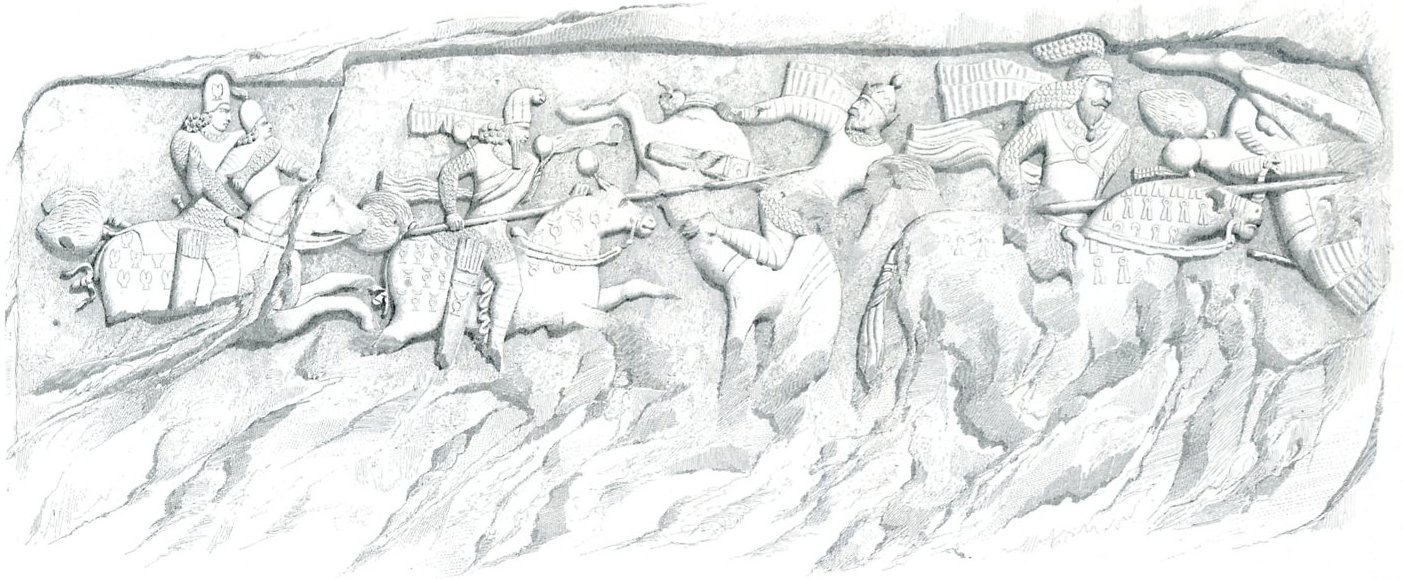 Once Ardashir was appointed ''
Once Ardashir was appointed '' At that time the Arsacid dynasty was divided between supporters of
At that time the Arsacid dynasty was divided between supporters of  Ardashir I's son Shapur I continued the expansion of the empire, conquering
Ardashir I's son Shapur I continued the expansion of the empire, conquering  Shapur had intensive development plans. He ordered the construction of the first dam bridge in Iran and founded many cities, some settled in part by emigrants from the Roman territories, including Christians who could exercise their faith freely under Sassanid rule. Two cities,
Shapur had intensive development plans. He ordered the construction of the first dam bridge in Iran and founded many cities, some settled in part by emigrants from the Roman territories, including Christians who could exercise their faith freely under Sassanid rule. Two cities,  During the second encounter, Roman forces seized Narseh's camp, his treasury, his harem, and his wife. Galerius advanced into
During the second encounter, Roman forces seized Narseh's camp, his treasury, his harem, and his wife. Galerius advanced into 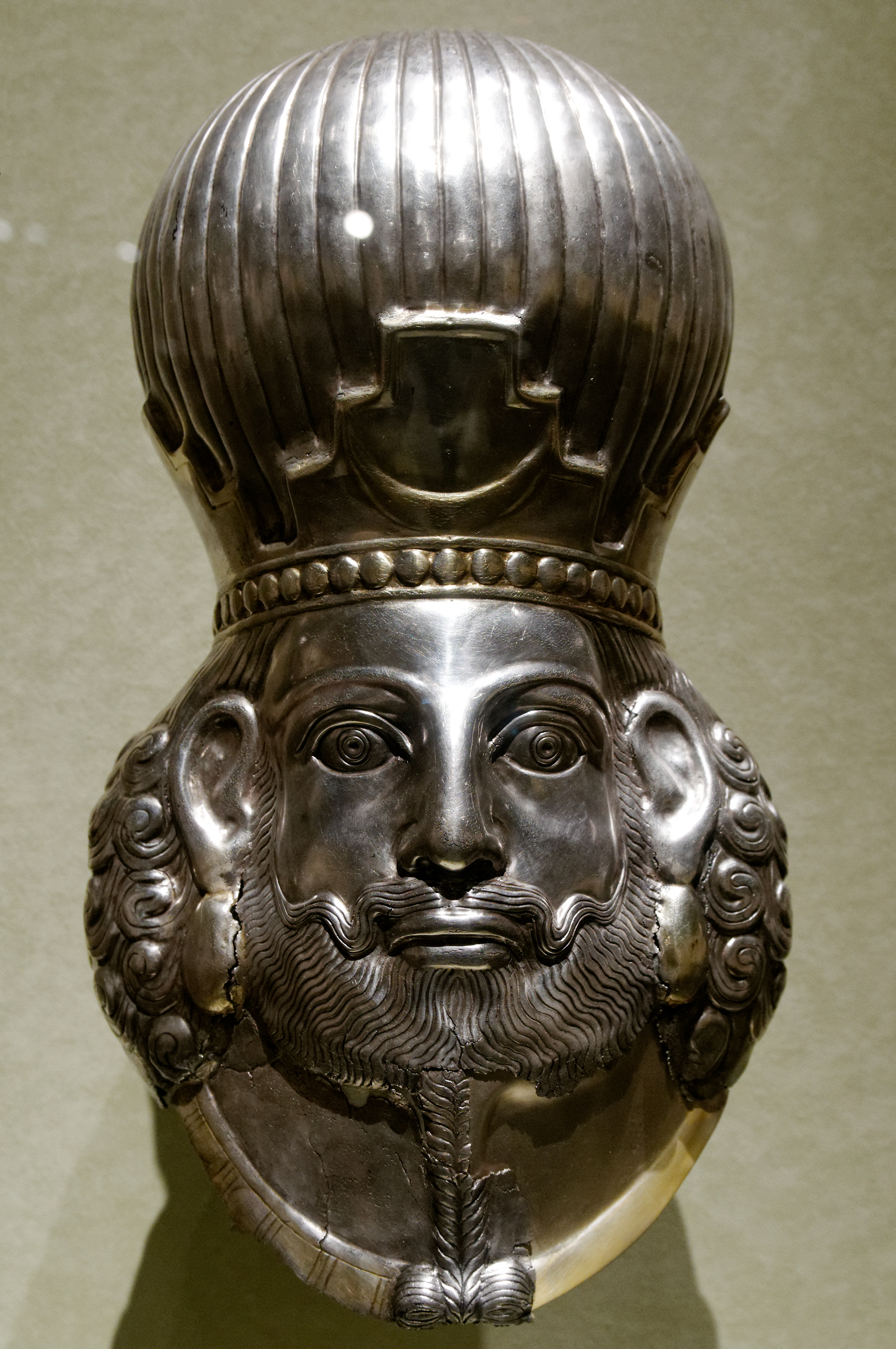 Following Hormizd II's death, northern Arabs started to ravage and plunder the western cities of the empire, even attacking the province of Fars, the birthplace of the Sassanid kings. Meanwhile, Persian nobles killed Hormizd II's eldest son, blinded the second, and imprisoned the third (who later escaped into Roman territory). The throne was reserved for
Following Hormizd II's death, northern Arabs started to ravage and plunder the western cities of the empire, even attacking the province of Fars, the birthplace of the Sassanid kings. Meanwhile, Persian nobles killed Hormizd II's eldest son, blinded the second, and imprisoned the third (who later escaped into Roman territory). The throne was reserved for 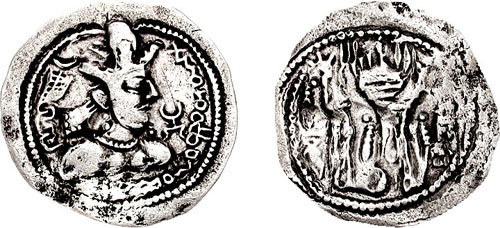 From around 370, however, towards the end of the reign of
From around 370, however, towards the end of the reign of  From Shapur II's death until
From Shapur II's death until  Bahram V's son
Bahram V's son  At the beginning of the 5th century, the Hephthalites (White Huns), along with other nomadic groups, attacked Iran. At first Bahram V and Yazdegerd II inflicted decisive defeats against them and drove them back eastward. The Huns returned at the end of the 5th century and defeated Peroz I (457–484) in 483. Following this victory, the Huns invaded and plundered parts of eastern Iran continually for two years. They exacted heavy tribute for some years thereafter.
These attacks brought instability and chaos to the kingdom. Peroz tried again to drive out the Hephthalites, but on the way to
At the beginning of the 5th century, the Hephthalites (White Huns), along with other nomadic groups, attacked Iran. At first Bahram V and Yazdegerd II inflicted decisive defeats against them and drove them back eastward. The Huns returned at the end of the 5th century and defeated Peroz I (457–484) in 483. Following this victory, the Huns invaded and plundered parts of eastern Iran continually for two years. They exacted heavy tribute for some years thereafter.
These attacks brought instability and chaos to the kingdom. Peroz tried again to drive out the Hephthalites, but on the way to  The second golden era began after the second reign of Kavad I. With the support of the Hephtalites, Kavad launched a campaign against the Romans. In 502, he took Theodosiopolis in Armenia, but lost it soon afterwards. In 503 he took Amida on the Tigris. In 504, an invasion of Armenia by the western Huns from the Caucasus led to an armistice, the return of Amida to Roman control and a peace treaty in 506. In 521/522 Kavad lost control of
The second golden era began after the second reign of Kavad I. With the support of the Hephtalites, Kavad launched a campaign against the Romans. In 502, he took Theodosiopolis in Armenia, but lost it soon afterwards. In 503 he took Amida on the Tigris. In 504, an invasion of Armenia by the western Huns from the Caucasus led to an armistice, the return of Amida to Roman control and a peace treaty in 506. In 521/522 Kavad lost control of 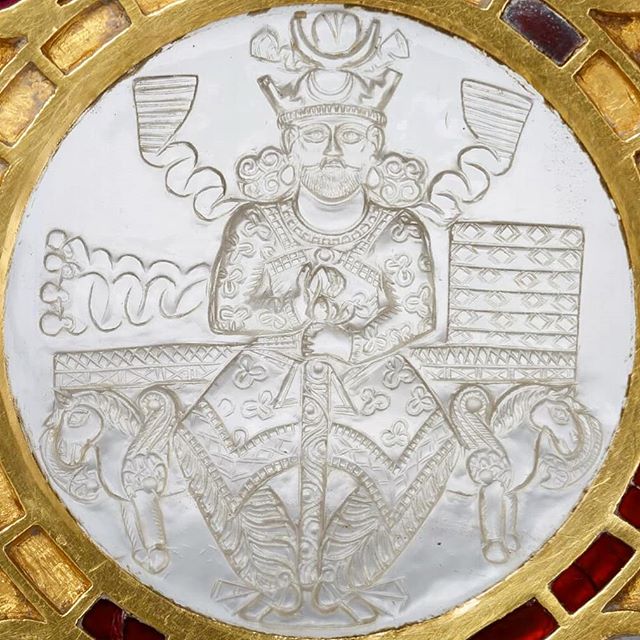 After the reign of Kavad I, his son
After the reign of Kavad I, his son  The new peace arrangement allowed the two empires to focus on military matters elsewhere: Khosrow focused on the Sassanid Empire's eastern frontier while Maurice restored Byzantine control of the
The new peace arrangement allowed the two empires to focus on military matters elsewhere: Khosrow focused on the Sassanid Empire's eastern frontier while Maurice restored Byzantine control of the  In response, Khosrau, in coordination with Avar and Slavic forces, launched a siege on the Byzantine capital of
In response, Khosrau, in coordination with Avar and Slavic forces, launched a siege on the Byzantine capital of 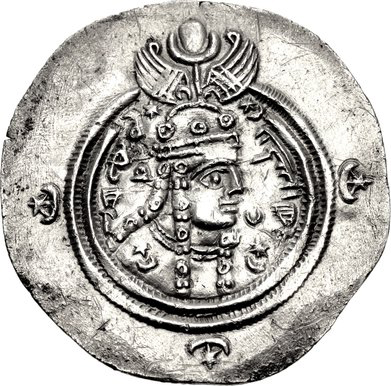 The impact of Heraclius's victories, the devastation of the richest territories of the Sassanid Empire, and the humiliating destruction of high-profile targets such as Ganzak and Dastagerd fatally undermined Khosrau's prestige and his support among the Persian aristocracy. In early 628, he was overthrown and murdered by his son
The impact of Heraclius's victories, the devastation of the richest territories of the Sassanid Empire, and the humiliating destruction of high-profile targets such as Ganzak and Dastagerd fatally undermined Khosrau's prestige and his support among the Persian aristocracy. In early 628, he was overthrown and murdered by his son  In early 632, a grandson of Khosrau I, who had lived in hiding in Estakhr,
In early 632, a grandson of Khosrau I, who had lived in hiding in Estakhr,  In 637, a Muslim army under the Caliph Umar ibn al-Khattāb defeated a larger Persian force led by General
In 637, a Muslim army under the Caliph Umar ibn al-Khattāb defeated a larger Persian force led by General  The Paygan formed the bulk of the Sassanid infantry, and were often recruited from the peasant population. Each unit was headed by an officer called a " Paygan-salar", which meant "commander of the infantry" and their main task was to guard the baggage train, serve as pages to the
The Paygan formed the bulk of the Sassanid infantry, and were often recruited from the peasant population. Each unit was headed by an officer called a " Paygan-salar", which meant "commander of the infantry" and their main task was to guard the baggage train, serve as pages to the  The cavalry used during the Sassanid Empire were two types of heavy cavalry units: Clibanarii and
The cavalry used during the Sassanid Empire were two types of heavy cavalry units: Clibanarii and 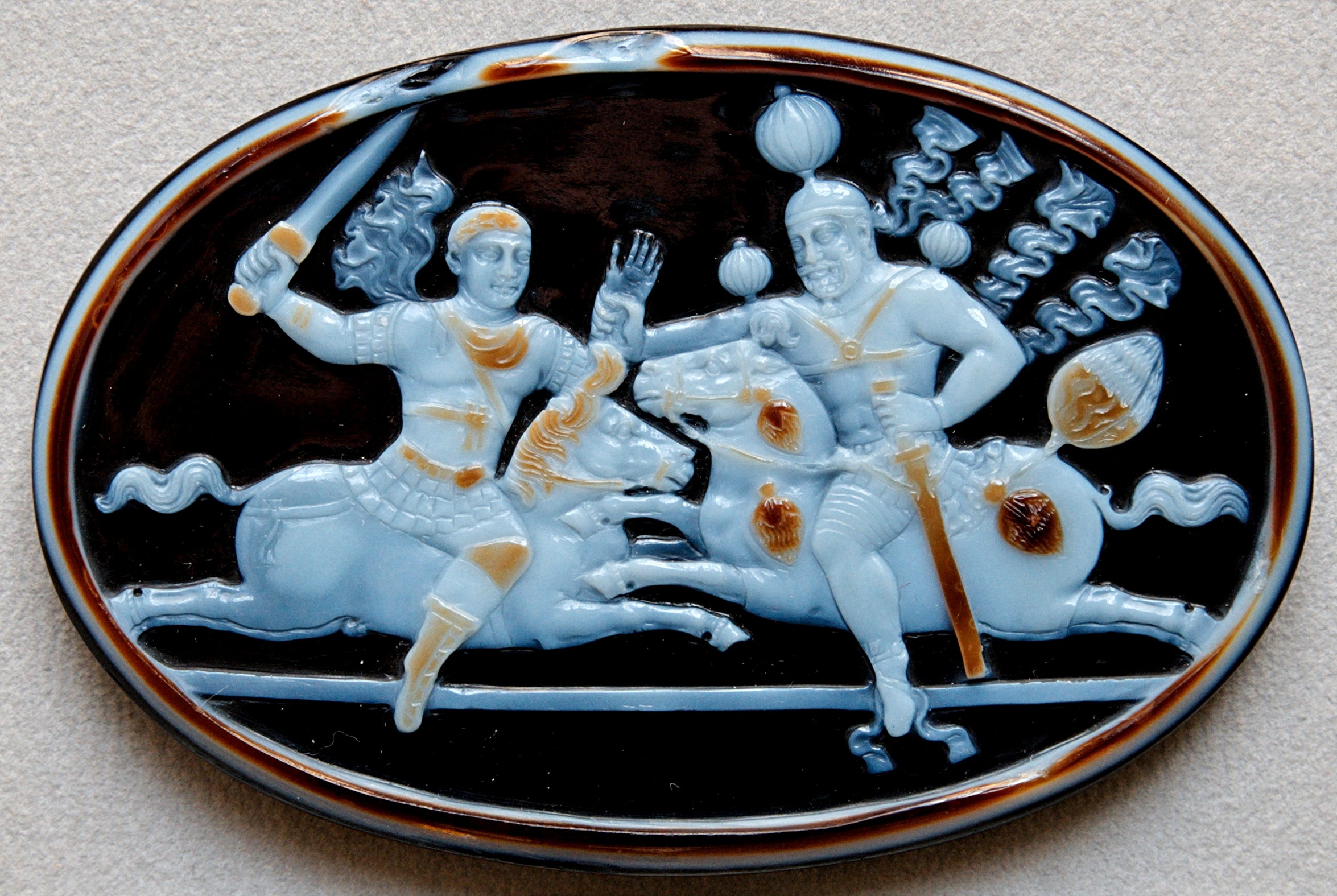 The Sassanids, like the Parthians, were in constant hostilities with the
The Sassanids, like the Parthians, were in constant hostilities with the 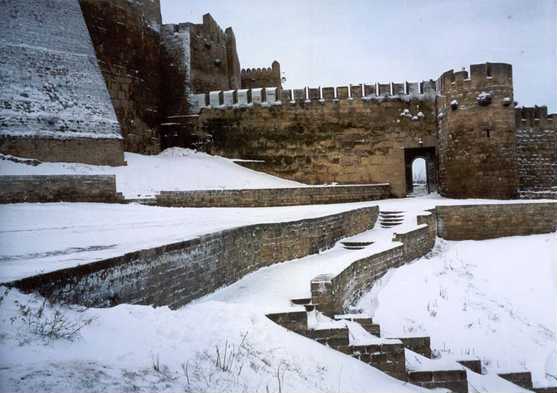 In the north,
In the north,  In 522, before Khosrau's reign, a group of monophysite
In 522, before Khosrau's reign, a group of monophysite  On different occasions, Sassanid kings sent their most talented Persian musicians and dancers to the Chinese imperial court at
On different occasions, Sassanid kings sent their most talented Persian musicians and dancers to the Chinese imperial court at 
 Following the conquest of Iran and neighboring regions,
Following the conquest of Iran and neighboring regions, 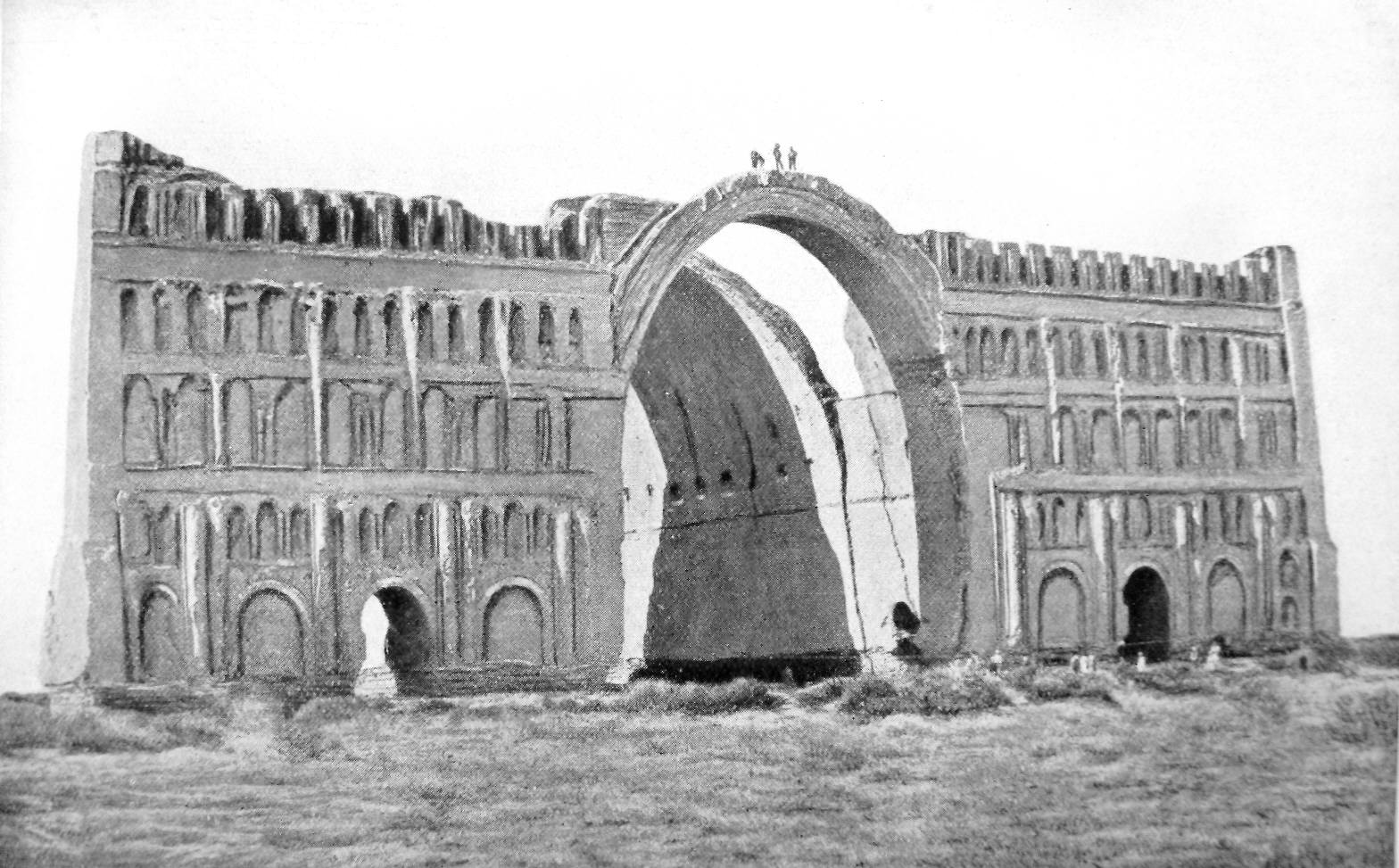 In contrast to Parthian society, the Sassanids renewed emphasis on a
In contrast to Parthian society, the Sassanids renewed emphasis on a  The head of the Sasanian Empire was the ''
The head of the Sasanian Empire was the ''

 The Sasanian kings were patrons of letters and philosophy. Khosrau I had the works of
The Sasanian kings were patrons of letters and philosophy. Khosrau I had the works of 
 Due to the majority of the inhabitants being of peasant stock, the Sasanian economy relied on farming and agriculture, Khuzestan and Iraq being the most important provinces for it. The Nahravan Canal is one of the greatest examples of Sasanian irrigation systems, and many of these things can still be found in Iran. The mountains of the Sasanian state were used for lumbering by the nomads of the region, and the centralized nature of the Sasanian state allowed it to impose taxes on the nomads and inhabitants of the mountains. During the reign of Khosrau I, further land was brought under centralized administration.Tafazzoli & Khromov, p. 48
Two trade routes were used during the Sasanian period: one in the north, the famous
Due to the majority of the inhabitants being of peasant stock, the Sasanian economy relied on farming and agriculture, Khuzestan and Iraq being the most important provinces for it. The Nahravan Canal is one of the greatest examples of Sasanian irrigation systems, and many of these things can still be found in Iran. The mountains of the Sasanian state were used for lumbering by the nomads of the region, and the centralized nature of the Sasanian state allowed it to impose taxes on the nomads and inhabitants of the mountains. During the reign of Khosrau I, further land was brought under centralized administration.Tafazzoli & Khromov, p. 48
Two trade routes were used during the Sasanian period: one in the north, the famous  Persian industry under the Sasanians developed from domestic to urban forms. Guilds were numerous. Good roads and bridges, well patrolled, enabled state post and merchant caravans to link Ctesiphon with all provinces; and harbors were built in the Persian Gulf to quicken trade with India. Sasanian merchants ranged far and wide and gradually ousted Romans from the lucrative Indian Ocean trade routes.Nicolle, p. 6 Recent archeological discovery has shown the interesting fact that Sasanians used special labels (commercial labels) on goods as a way of promoting their brands and distinguish between different qualities.
Khosrau I further extended the already vast trade network. The Sasanian state now tended toward monopolistic control of trade, with luxury goods assuming a far greater role in the trade than heretofore, and the great activity in building of ports, caravanserais, bridges and the like, was linked to trade and urbanization. The Persians dominated international trade, both in the
Persian industry under the Sasanians developed from domestic to urban forms. Guilds were numerous. Good roads and bridges, well patrolled, enabled state post and merchant caravans to link Ctesiphon with all provinces; and harbors were built in the Persian Gulf to quicken trade with India. Sasanian merchants ranged far and wide and gradually ousted Romans from the lucrative Indian Ocean trade routes.Nicolle, p. 6 Recent archeological discovery has shown the interesting fact that Sasanians used special labels (commercial labels) on goods as a way of promoting their brands and distinguish between different qualities.
Khosrau I further extended the already vast trade network. The Sasanian state now tended toward monopolistic control of trade, with luxury goods assuming a far greater role in the trade than heretofore, and the great activity in building of ports, caravanserais, bridges and the like, was linked to trade and urbanization. The Persians dominated international trade, both in the  Under Parthian rule, Zoroastrianism had fragmented into regional variations which also saw the rise of local cult-deities, some from Iranian religious tradition but others drawn from
Under Parthian rule, Zoroastrianism had fragmented into regional variations which also saw the rise of local cult-deities, some from Iranian religious tradition but others drawn from  Reflecting the regional rivalry and bias the Sassanids are believed to have held against their Parthian predecessors, it was probably during the Sassanid era that the two great fires in Pars and
Reflecting the regional rivalry and bias the Sassanids are believed to have held against their Parthian predecessors, it was probably during the Sassanid era that the two great fires in Pars and  Of great importance for Zoroastrianism was the creation of the Avestan alphabet by the Sassanids, which enabled the accurate rendering of the
Of great importance for Zoroastrianism was the creation of the Avestan alphabet by the Sassanids, which enabled the accurate rendering of the  Sasanian culture and military structure had a significant influence on Culture of ancient Rome, Roman civilization. The structure and character of the Roman army was affected by the methods of Persian warfare. In a modified form, the Roman Imperial autocracy imitated the royal ceremonies of the Sasanian court at Ctesiphon, and those in turn had an influence on the ceremonial traditions of the courts of medieval and modern Europe. The origin of the formalities of European diplomacy is attributed to the diplomatic relations between the Persian governments and the Roman Empire.
Sasanian culture and military structure had a significant influence on Culture of ancient Rome, Roman civilization. The structure and character of the Roman army was affected by the methods of Persian warfare. In a modified form, the Roman Imperial autocracy imitated the royal ceremonies of the Sasanian court at Ctesiphon, and those in turn had an influence on the ceremonial traditions of the courts of medieval and modern Europe. The origin of the formalities of European diplomacy is attributed to the diplomatic relations between the Persian governments and the Roman Empire.
 The collapse of the Sasanian Empire led to Islam slowly replacing Zoroastrianism as the primary religion of Iran. A large number of Zoroastrians chose to emigrate to escape Islamic persecution. According to the ''Qissa-i Sanjan'', one group of those refugees landed in what is now Gujarat, India, where they were allowed greater freedom to observe their old customs and to preserve their faith. The descendants of those Zoroastrians would play a small but significant role in the development of India. Today there are over 70,000 Zoroastrians in India.
The Zoroastrians still use a variant of the religious calendar instituted under the Sasanians. That calendar still marks the number of years since the accession of Yazdegerd III, just as it did in 632.
The collapse of the Sasanian Empire led to Islam slowly replacing Zoroastrianism as the primary religion of Iran. A large number of Zoroastrians chose to emigrate to escape Islamic persecution. According to the ''Qissa-i Sanjan'', one group of those refugees landed in what is now Gujarat, India, where they were allowed greater freedom to observe their old customs and to preserve their faith. The descendants of those Zoroastrians would play a small but significant role in the development of India. Today there are over 70,000 Zoroastrians in India.
The Zoroastrians still use a variant of the religious calendar instituted under the Sasanians. That calendar still marks the number of years since the accession of Yazdegerd III, just as it did in 632.
 *224–241: Reign of
*224–241: Reign of